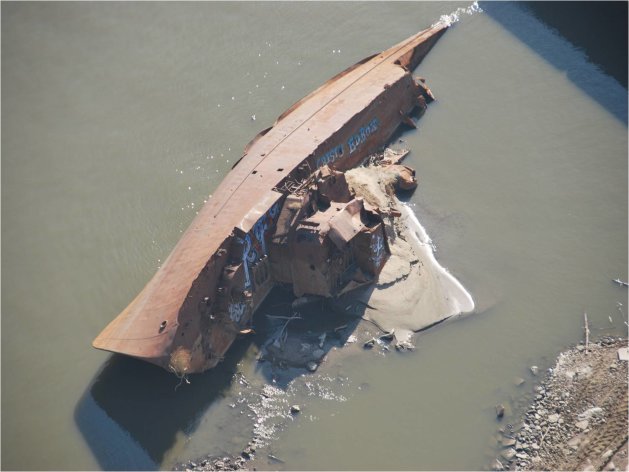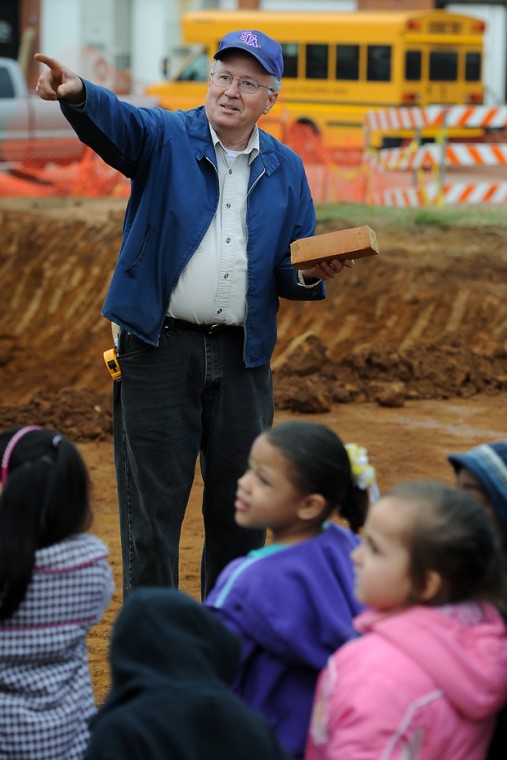From Times of Israel:
Digging deep: archaeology for everyone
Shaul Gefen grew up in a miniscule apartment
in Dorot, the first kibbutz to be founded in the Negev. On one side of
the only sink in the one-and-a-half-room dwelling stood a box of caustic
soda for cleaning metal; on the other, a container with paraffin oil
for restoration. Both items belonged to his father, Yekutiel, who like
many others of his generation was obsessed with the past and spent his
free time combing the nearby fields, tels, and wadis for artifacts left
behind by long-ago Negev settlers.
As a child, Gefen often tagged along with his
dad — but not because he was interested in archeology. It was the joy of
picking things up off the ground and seeing the look on his father’s
face when they turned out to be special, he says. “Once I brought him
what I thought was a tiny bead,” relates Gefen. “My father was thrilled,
and told me I had discovered a scarab — an ancient Egyptian amulet
decorated with a beetle.”


Antiquities on display in Dorot, the first kibbutz to be founded in the Negev (photo: courtesy Shmuel Bar-Am)
Today, in addition to his other kibbutz
duties, Gefen is in charge of Dorot’s marvelous archeological exhibit.
Like dozens of other little-known archeological exhibits scattered
throughout Israel, Dorot’s is free to all comers.
Scattered throughout Israel are dozens of
archeological exhibits, indoor and outdoor, that anyone can visit at no
charge. Each has its own particular charm, history and landscape, and
all display their artifacts courtesy of the Israel Antiquities
Authority. That’s because every relic found in this country that is more
than 312 years old (dating back to before 1700) belongs to the State.
Each and every ancient object, no matter how
small, is catalogued by the IAA, which holds a million or so artifacts
in storerooms that are bursting at the seams. Delighted when antiquities
are put on display for the general public to enjoy, professionals at
the IAA assist in setting up the exhibits, provide historical and
technical information, and offer unending encouragement to local staff.
Here are three wonderful exhibits — in Israel’s north, center and south!
South: Kibbutz Dorot was
established in 1941. The founders, idealistic young people from Germany,
Czechoslovakia and Latvia, had been waiting impatiently at a farming
center in Hadera for half a decade. Imagine their joy when informed that
land had been purchased for them to settle in the Negev.
Their new little kibbutz, surrounded by Arab
villages, was 20 kilometers south of the southernmost Jewish settlement.
Nearby stood several man-made hills (tels) where communities flourished
thousands of years ago. One of them was Tel el-Hesi, excavated in 1890
by Flinders Petrie; it’s the site of the very first scientific
archeological dig in the Land of Israel. (Petrie’s body, by the way, is
buried in Jerusalem. But his wife thought his genius deserved analysis,
and sent his head to the Royal Surgeons of London for study).


Capitals
and pillars at the entrance to Dorot are from a huge Byzantine
monastery that stood on a hill only minutes away. (photo: courtesy
Shmuel Bar-Am)
Dorot’s archeology exhibit is found inside half of the kibbutz baby house (beit hatinokot),
the only building left from the original settlement. Standing outside
is the bottom of a marble chancel screen, or lattice, used to separate
priests from simple worshippers in Byzantine churches. Capitals and
pillars at the entrance are from a huge Byzantine monastery that stood
on a hill only minutes away.
Inside, antiquities are displayed according to
the site at which they were discovered, with English descriptions:
animal figurines and oil lamps from the Israelite period, flint from the
Paleolithic era, human figurines dating back to the Greeks, iron-age
cooking pots and Chalcolithic relics such as basalt tools, and flint
scrapers.


Dorot Museum (photo: courtesy Shmuel Bar-Am)
Among the exhibits on view is an exciting coin
collection. It includes a whole package of coins that Yekutiel Gefen’s
dad put into the kibbutz safe 25 years ago: it was completely forgotten
until recently. Take a look with the magnifying glass, as Gefen explains
how the entire history of a city can be read from an ancient coin.
The collection includes a penny from 1896,
probably left near the kibbutz in 1917. That’s when the British
relentlessly pursued the Turks right through this very area and pushed
them out of Palestine. Gefen jokes that the penny probably fell out of
the pocket of a British soldier who, when he went to the canteen for a
drink, would have been devastated to find he was missing a coin!
Center: During the War of
Independence, when former president Ezer Weizman flew airplanes into the
fray, he often took off from a little army base in Herzliyah. That army
base, including a few of its (renovated) barracks, today hosts the
first private institution of higher education in Israel: the
Interdisciplinary Center Herzliya, also known as the IDC, established in
1994 by Tel Aviv law professor Uriel Reichman.


On
the IDC campus in Herzliya, a sarcophagus from Tul Kerem in the Roman
Period, decorated with a tabula ensata – a rectangular frame with an
inscription or artistic design within. (photo: courtesy Shmuel Bar-Am)
Looking very much like a kibbutz, with mostly
low buildings, lots of gardens and a pastoral atmosphere, the IDC offers
bachelor’s and master’s degrees in six different areas: international
law, business, government diplomacy and strategy, computer science,
communications (in a state-of-the-art environment new to Israel) and
psychology. The IDC’s international school — also unique to this country
— offers the same degrees, but classes are taught in English.
Stressing the importance of mixing the present
with the past, Professor Reichman decided students at the IDC should
come into daily contact with archeology. It all started small, with a
capital or sarcophagus here and there borrowed from the IAA and placed
strategically outside of buildings and along the sidewalks. But when
construction began on the School of Business, the IDC began methodically
planning what kind of relics to display and where to place them.
Soon antiquities relating to trade and
government — such as ancient weights, certificates of contract and
milestones naming long ago governors of Israel began to appear. And as
the concept took wings, more and more artifacts began showing up on the
campus, exposing Israeli students daily to their past. The displays also
provide foreign students walking through the grounds with a whole new
idea of what Israel is all about.
Visitors may enjoy both antiquities and modern
art by strolling through the IDC any time that the school is open.
Don’t miss the permanent exhibition in the Business School, which
includes an authentic letter written by Shimon Bar Kochba to one of his
generals, a bronze coin from the Hasmonean era, and a 9th century limestone capital from Samaria.
Look for an enormous ornamental sarcophagus
(the largest I have ever seen), and a beautifully sculpted second
century bust of Apollo that once stood in Roman Ashkelon. Examine basalt
and limestone sarcophagi, granite shafts, parts of a Byzantine oil
press, and my favorite: a decorative basalt door to a burial cave that
dates back to the Roman era. Next to every relic are outstanding,
detailed explanations in English.
North: If I could meet
anyone at all from the not-too-distant past, I would probably choose
David Torrance. Doctor and missionary, he was an extraordinary man.
Indeed, after his death in 1946 the Chief Rabbi of Tiberias remarked
that the town had been triply blessed: it had a glorious lake, healing
hot springs, and David Torrance!


Utensils used in food preparation — apparently from the Talmudic period, Scots Hotel, Tiberias (photo: courtesy Shmuel Bar-Am)
Torrance got his first look at Tiberias in
1884 when he was part of a Scottish fact-finding delegation to the Holy
Land. The young doctor was appalled to find the town falling apart:
Israel’s spiritual and intellectual center for hundreds of years and one
of her four holiest cities, Tiberias in the 19th century was awash with
sewage and disease. Soon afterwards Torrance returned as head of the
Scottish Church’s Mission to the Jews. He planned to preach the Gospel,
of course, but he would also heal the townspeople.
Immediately, Torrance began treating patients
with the tools he had available: Epsom salts, cod liver oil, and his
magically healing hands. Ten years later he erected the town’s first
medical facility, where he continued to care tenderly for everyone in
need regardless of his or her faith. Despite a series of horrendous
personal tragedies, and the fact that he failed miserably in his mission
to convert the Jews, Dr. Torrance provided half a century of selfless
service to the city and was universally revered.
The hospital eventually became a maternity
unit which closed down in 1950 when no longer needed. For several
decades afterwards the complex operated as a simple pilgrims’ hostel,
but a few years ago it was renovated and re-opened as Tiberias’ unique
and utterly exquisite Scots Hotel.
Scattered around the grounds are fascinating
antiquities from the lake region, items that the doctor would discover
when driving around in his horse and buggy. A number of the artifacts
were actually gifts from grateful Arab patients, who knew of the
doctor’s penchant for archeology.
Visitors are welcome to walk around the
gardens on weekdays, viewing and learning about ancient stone utensils
used for food preparation, anchors, ossuaries, pillars and other
antiquities. Excellent signs in English describe each item and explain
its historical background. And, while you are there, why not enjoy a cup
of tea in the elegant, second-story lounge?
















